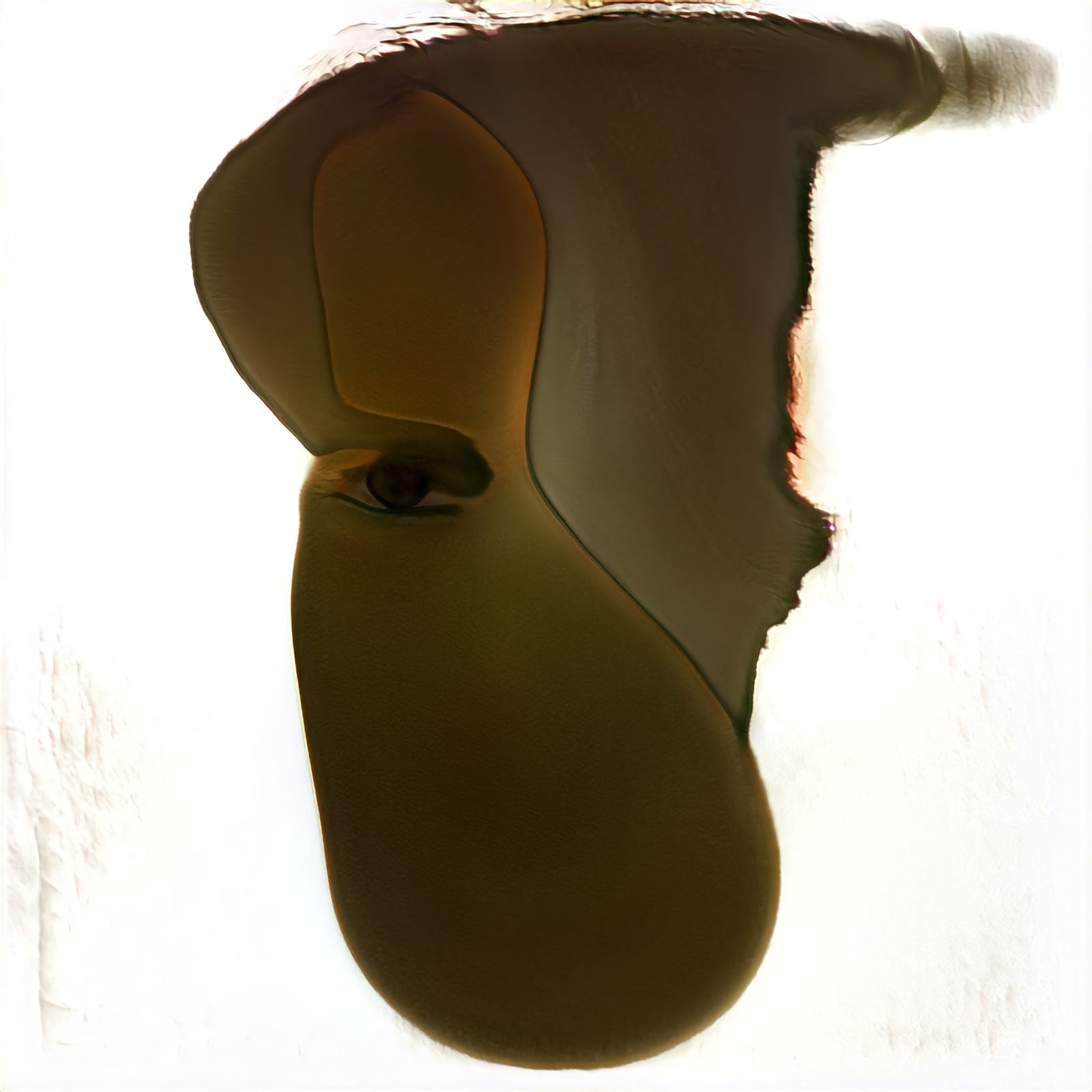生存本能作为预先训练的数据集。 (Survival Instinct as a pre-trained dataset.)
It’s here to protect us. To make us cautious. Pareidolia. A well-known phenomenon, when we see faces where aren’t any. We see faces on Mars, we see Jesus in the toast, we see it everywhere. Well, it does our brain, which is trained on biometrical recognition: eyes, nose, mouth = when everything is in the right place, that’s a face.
我是来保护我们的。 为了使我们谨慎。 帕累多利亚 。 当我们看到没有面Kong的时候,这是一个众所周知的现象。 我们在火星上看到面Kong , 在烤面包中看到耶稣,到处可见。 好吧,这对我们的大脑进行了生物特征识别方面的训练:眼睛,鼻子,嘴巴=当一切都放在正确的地方时,那就是一张脸。
It originated from our past — as we were strolling around the woods hunting mammoths. It was better to confound a bush with a tiger once more than to ignore an actual predator between the trees. Survival instinct.
它起源于我们的过去-当我们在树林里狩猎猛mm象时漫步。 最好再把灌木丛和老虎混在一起,而不是忽略树木之间真正的掠食者。 生存本能。
Neural Networks are acting similarly. They recognize what they are trained on. The best example is StyleGAN2 Projection, where the latent image is juxtaposed with an uploaded one and is examined for its origins (more about this later).
神经网络的行为与此类似。 他们认识到培训的内容。 最好的例子是StyleGAN2 Projection ,其中潜像与上载的潜像并置,并检查其起源(稍后会对此进行更多介绍)。
Here is an example of human and artificial Pareidolia:
这是人类和人工帕累多虫的一个例子:

While our human eye sees a face in some random rock formations, Convolutional Neural Networks of an early version of Google Deep Dreams recognizes dogs. Everywhere. The explanation to the question “why dogs?” was obvious:
当我们的人眼看到某些随机岩层中的面Kong时,早期版本的Google Deep Dreams的卷积神经网络可以识别狗。 到处。 对“为什么要狗?”问题的解释 很明显:
In Deep Dream’s case, that data set is from ImageNet, a database created by researchers at Stanford and Princeton who built a database of 14 million human-labeled images. But Google didn’t use the whole database. Instead, they used a smaller subset of the ImageNet database released in 2012 for use in a contest… a subset which contained “fine-grained classification of 120 dog sub-classes.”(Source: FastCompany)
在Deep Dream的情况下,该数据集来自ImageNet,这是由斯坦福大学和普林斯顿大学的研究人员创建的数据库,该数据库建立了包含1400万张人类标签图像的数据库。 但是Google并未使用整个数据库。 相反,他们使用2012年发布的用于比赛的ImageNet数据库的一个较小的子......其包含的子集(资料来源:“120狗子类细粒度的分类。” FastCompany )
This was one of the first visualizations of biased Neural Networks, being trained on a limited dataset. It isn’t AI’s fault to be unable to recognize objects it isn’t trained on. It’s up to us.
这是在有限的数据集上进行训练的有偏神经网络的最早可视化之一。 无法识别未经训练的对象不是AI的错。 这取决于我们。
失败之美 (The Beauty of a Fail)
But this flaw can become an advantage — if used for experimental purposes.
但是,如果将其用于实验目的,则可以成为一种优势。
You have already seen the StyleGAN2 Projection feature.
您已经看到了StyleGAN2投影功能 。
The main task of this function is to compare a given image with the seeds from the Latent Space (hidden layer of StyleGAN, where all unique image seeds are located before they are getting modified). Among others, the matching images can point out the Deep Fake (for criminologists’ Image Forensics).
此功能的主要任务是将给定的图像与来自潜在空间(StyleGAN的隐藏层,所有唯一的图像种子在被修改之前都位于其中)的种子进行比较。 除其他外,匹配的图像可以指出“深造”(针对犯罪学家的图像取证)。
At some point in my experiment, I tried other imagery than physiognomical pictures.
在实验的某个时刻,我尝试了其他图像,而不是生理图像。
It delivered some surprising results:
它产生了一些令人惊讶的结果:
Or even an unsettling one (speaking of Uncanny Valley):
甚至是一个令人不安的人(谈到Uncanny Valley):
I used for this experiment StyleGAN2-based Neural Network, trained on Faces from FlickrDataset, StyleGAN2 for FFHQ dataset at 1024×1024.
我在基于StyleGAN2的神经网络实验中对FHQ数据集以1024×1024的 FlickrDataset, StyleGAN2的 Faces进行了训练。
The same dataset is implemented in a web application ArtBreeder. Using the upload function, you can augment the latent space with new images. But they are aligned with StyleGAN2 trained network and modified in a compatible way using Projection feature.
相同的数据集在Web应用程序ArtBreeder中实现 。 使用上载功能,可以用新图像扩大潜在空间。 但是它们与受StyleGAN2训练的网络保持一致,并使用Projection功能以兼容的方式进行了修改。
Sometimes adding a particular non-latent image to the Latent Space causes interesting effects. In one case, StyleGAN2 “corrected” a photo of an artist, who playfully had covered his eye with a paper disc:
有时,将特定的非潜像添加到潜空间会产生有趣的效果。 在一种情况下,StyleGAN2“纠正”了一位艺术家的照片,该艺术家用纸碟嬉戏地遮住了眼睛:
Experimenting with limited recognition skills (which are caused by limited training) can bring fascinating results.
用有限的识别技能进行试验(这是由有限的培训引起的)可以带来令人着迷的结果。
It began, as I tried to upload a photo of an object. Without any facial expressions or biometric elements. My motivation was to examine, in what way StyleGAN2 can identify and categorize a random motif (instead of photo portrait).
开始时,我尝试上传物体的照片。 没有任何面部表情或生物特征元素。 我的动机是研究StyleGAN2以哪种方式可以识别和分类随机图案(而不是照片肖像)。
So I uploaded my photo of a cup of coffee. Random as it is.
因此,我上传了一杯咖啡的照片。 原样是随机的。


Using further modifications of various Neural Layers (specific face features) new portraits were generated. As you see, neither could AI recognize the drawing, nor imitate its physiognomical style and features. But the outcomes were nevertheless unique, instead.
使用各种神经层(特定的面部特征)的进一步修改,生成了新的肖像。 如您所见,AI既无法识别绘图,也无法模仿其外观风格和特征。 但是结果却是独一无二的。
As you see, in the first image the dark spot was recognized by AI as an eye — and other parts of the face followed.
如您所见,在第一张图像中,人工智能将黑点识别为眼睛,然后是面部的其他部分。




In motion, you can see better the transitions between changing neural layers of faces. But you can never spot any traces of a cup of coffee.
在运动中,您可以更好地看到变化的面部神经层之间的过渡。 但是,您永远找不到一杯咖啡的痕迹。
实验结果 (The Outcome of the experiment)
This experiment proves in a very visual way:
该实验以非常直观的方式证明:
The quality of an ML recognition model is highly dependent on datasets it was trained on. And the quality of those datasets is dependent on labeling and preparation by humans.
机器学习识别模型的质量高度依赖于对其进行训练的数据集。 这些数据集的质量取决于人类的标记和准备工作。
Before we trust to AI, we should enable this trust in ourselves. Examine Datasets and their provenance, think out of the box (“what could happen if”), and be aware, that there is still a long way to the AGI.
在信任AI之前,我们应该先实现对自身的信任。 检查数据集及其出处,开箱即用(如果发生,会发生什么),并意识到, 到AGI还有很长的路要走 。
翻译自: https://towardsdatascience.com/pareidolia-of-ai-dba7cf44bfde





















 1381
1381

 被折叠的 条评论
为什么被折叠?
被折叠的 条评论
为什么被折叠?








